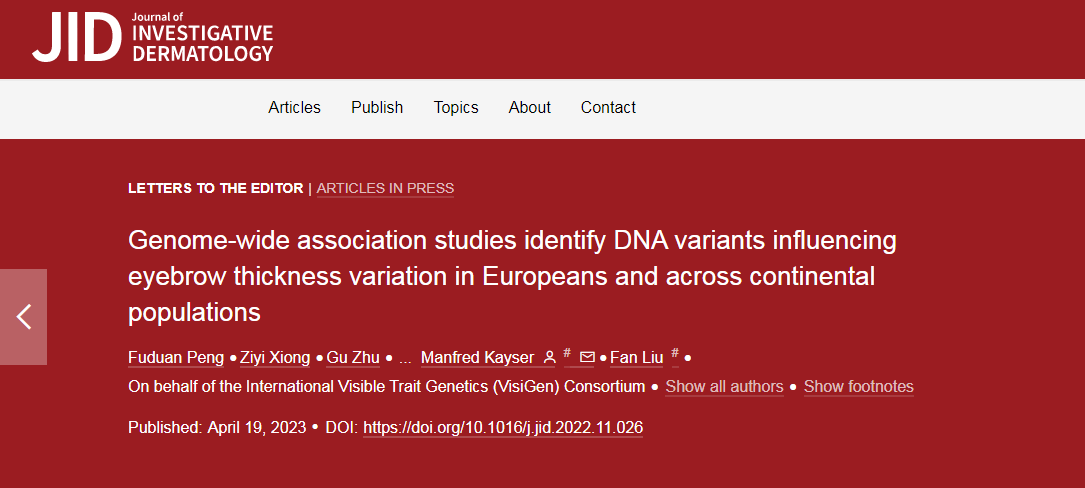According to the Journal of Investigative Dermatology published by Elsevier, the first gene mapping study on European eyebrow thickness found three previously unreported gene loci. This study conducted by the International Federation of Genetics (VisiGen) shows that people around the world share some of the same genes for eyebrow appearance, as well as some different potential genes.

The appearance of human eyebrows is not just a modification, but rather a genetic issue. The thickness of eyebrows, like other facial features, is highly heritable. So far, people's genetic knowledge about eyebrow thickness is very limited and limited to non Europeans. This study is the first genome-wide association study (GWAS) on eyebrow thickness in Europeans. By identifying new genes and rediscovering some previously discovered genes in non Europeans, this study expands the genetic knowledge of human eyebrow variations and has implications for dermatology and other fields.
Previous research was conducted in individuals from Latin America and China, establishing four genetic loci related to eyebrow thickness. Due to the lack of reports on European eyebrow thickness GWAS, researchers do not know whether the genetic effects of eyebrow thickness described in non European individuals persist in Europeans, or whether there are European specific genetic loci related to eyebrow thickness, or both.
This study, targeting 9948 individuals from four European ancestry groups, not only identified three previously unreported gene loci related to eyebrow thickness, but also rediscovered two of the four previously discovered gene loci in non European populations. The other two gene loci reported previously on non Europeans have little impact on Europeans, because the Allele frequency of Europeans is very low.
The study significantly improved the genetic knowledge of human eyebrow appearance by increasing the number of known genes from 4 to 7, and provided new targets for future functional research. By proving that eyebrow variation is determined by common and different genetic factors among mainland populations, the findings emphasize the necessity of studying different ancestral populations to reveal the genetic basis of human characteristics, including but not limited to physical appearance.
Genome-wide association studies identify DNA variants influencing eyebrow thickness variation in Europeans and across continental populations
Journal: Journal of Investigative Dermatology
Corresponding Author: Fan Liu
Abstract:
Natural variation in eyebrow thickness (ET) is one of the most conspicuous facial features. Understanding its genetic basis is of broad interest and has implications for dermatology and other fields. Two genome-wide association studies (GWASs) for ET have been reported thus far. In 2,457 Latin Americans from the CANDELA cohort, Adhikari et al. identified 3q22.3 harboring FOXL2 ( Adhikari et al., 2016 ). In 2,961 Han Chinese from the TZL cohort, Wu et al. discovered 3q26.33 harboring SOX2 and 5q13.2 harboring FOXD1 and by meta-analysis of CANDELA and TZL 2q12.3 harboring EDAR ( Wu et al., 2018 ). Thus, four ET-associated loci have been established thus far, all in non-Europeans. As no European ET GWAS had been reported, it remains unknown whether the genetic ET effects described in non-Europeans persist in Europeans, or whether there are European-specific genetic loci involved in ET, or both.





